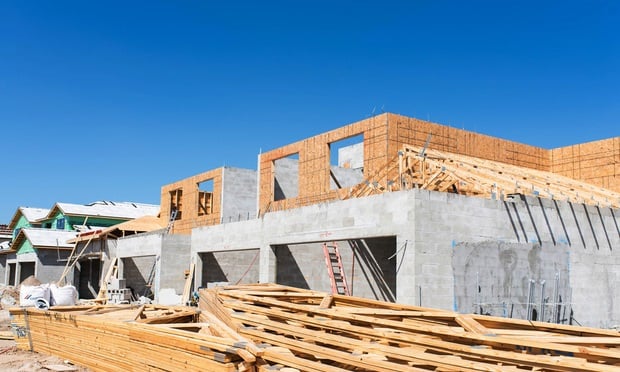PALM SPRINGS, CA-The mood was decidedly upbeat at the National Multi Housing Council’s Apartment Strategies Conference, held Tuesday at the La Quinta Resort & Club here. The one-day conference is a precursor to the NMHC’s Annual Meeting, which has attracted over 1,000 people this year.
The day started off on a positive note with the first session, which brought together Jay Lybik, vice president of market research for Equity Residential, Greg Willett, vice president of research and analysis for MPF Research and Mark Obrinsky, NMHC’s chief economist and vice president of research, who moderated. This year should be a strong one for multifamily, though recovery will be slow to moderate, said the researchers.
The fact that vacancy rates are still relatively low and very little supply is coming on line “is setting it up to be a fantastic year,” said Lybik. Still, absorption numbers may actually decline in 2011 and 2012, but that’s only because there isn’t much room to maneuver. “Vacancies came down so much in 2010 that there’s not as much available to be absorbed in 2011 and 2012,” he says.
Meanwhile, Willet shared that average revenues rose about 4% in 2010, and 2011 should be even better. “Look for revenue growth near 6%, with occupancies up about 80 basis points and rents up about 5.1%, on average,” he said, adding that 2012 should be similar. However, the market may hit a “minor bump” in 2013 to 2014, when a lot more new supply comes on line and some pent-up demand for single-family homes could get unleashed.
Kicking off the investment panel, “Reality Check: Have Valuations Really Firmed or Are We in Bubble 2.0?,” moderator Matthew Lawton, an executive managing director with HFF, commented, “It’s nice to be out of the year of low forma and crash flow.”
The panelists seemed to echo that sentiment, as they outlined their bullish plans for 2011 and 2012. Mark Alfieri, COO of Multifamily for Behringer Harvard, said that forecasted decreases in concessions in most markets, would lead to higher effective rents. “Anyone buying today is pricing in substantial rent growth,” he said. “Our modeling shows us getting back to 2006 rents by the end of 2012, so still have a ways to go.” Behringer Harvard plans to buy another $1 billion to $1.5 billion in assets in 2011 and 2012.
Because AMLI Residential Properties is a net effective shop, it doesn’t offer concessions, said chairman and CEO Greg Mutz. But the firm is expecting 6% revenue growth this year. In its worst-performing markets, it’s expecting 2% to 3% rent growth in 2011. The top markets may see as much as 12% to 13%.
In the top markets, Steve Zaleski, managing director of the multihousing group for CB Richard Ellis Investors, sees 5% to 8% rent growth, and expects the worst markets to post growth of 1% to 2% in 2011-2012. And TRECAP Partners managing director Michael McNamara is currently underwriting 4% to 5% rent growth in most markets. TRECAP bought a little over 200,000 units this past year and is in the process of raising capital for a value-added multifamily-focused fund.
After Mutz and Zaleski revealed plans to develop about $1 billion worth of product over the next couple of years, McNamara commented that there’s a disconnect between those plans and where supply is. But, Zaleski countered, “In some cases, the pricing has gone above what we can build for, so we’re focusing on building.” But, he added, that’s the case only in markets such as Boston and San Diego, not areas like the Southeast.
Alfieri concurred: “I’ve rarely before seen a market where people are willing to buy so close to replacement costs at such low cap rates.” He says his firm is still finding opportunities out there, but not in high barrier-to-entry markets.
Despite the narrow gap between replacement cost and purchase price, McNamara denied any thoughts of a bubble. “If employment picks up, rents in these markets are going to move up.”
Though his firm tends to underwrite a minimum of 5.5% rent growth for its deals, Zaleski has higher expectations. “With job growth, we’re going to see double-digit rent growth in many of these markets,” he said.
Some of the speakers were even stunned at the sector’s performance. “It’s amazing to me that we have come so far in a year,” in terms of prices, cap rates and fundamentals, said McNamara.
That’s probably what’s keeping demand for the sector high, particularly from the institutional side. There’s strong interest in multifamily from a host of investors simply because it has the strongest fundamentals of all product types, said Mutz. But that’s also made it difficult to find deals.
Most investors have also had to adjust their return expectations. Whereas last year, Behringer was looking at 12% to 13% returns on deals at 60% leverage, that number is more like 9% to 12% these days, given a seven-year hold. Unlevered returns are probably in the 7% range, Alfieri added. That’s all mainly because deals have gotten very difficult to underwrite.
But has that led these firms to look outside of their core markets to get better numbers? Not necessarily. As McNamara puts it, “Chasing yield is like chasing a car down the freeway. At some point, you’re going to get trampled. Having a business plan that focuses on secondary markets—that’s fine. But going into them because your original business plan didn’t work out—that’s a bad idea.”
© Touchpoint Markets, All Rights Reserved. Request academic re-use from www.copyright.com. All other uses, submit a request to [email protected]. For more inforrmation visit Asset & Logo Licensing.






